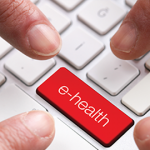By proactively sharing visit summaries and educational resources, sending actionable reminders, and opening real-time access to a patient’s health record, providers are taking a step toward constructing a transparent healthcare process in which the patient can take an active role in each encounter, as well as manage their health and care on an ongoing basis, according to the provider’s recommendations.
CMS considers patient engagement as a key component of the Meaningful Use Program and the ACR expects to see more objectives and higher thresholds for the measures in Stages 2 and 3 of the program. Pursuit of meaningful use requires the practice to carefully consider their strategy for patient communication and access to information—a strategy that goes beyond the installation of health IT.
Don’t expect your patients to spontaneously adopt these systems because you make a portal or personal health record system available. If you want to motivate your patients to meaningfully use patient-centered health IT and the information generated by these systems, consider addressing patient engagement initiatives head-on as part of the practice’s overall strategic plan or operational goals. You may even want to get patients involved in designing these initiatives!
Effective patient engagement will require a multidimensional approach, with focus on delivering health information through the right delivery mechanisms, at the right time in the care process, and in the proper context to motivate and sustain care-plan compliance and lifestyle modifications.
More than Just Meaningful Use
The promotion of patient engagement through meaningful use is just one small piece of the national movement to encourage health literacy and promote changes in the health delivery system that seek to make the patient a partner in their care through improved access to health information, effective and efficient communication methods, and informed and shared decision-making.
Organizations including the Agency for Healthcare Research and Quality, National Institutes of Health, National Library of Medicine, Robert Wood Johnson Foundation, and many others are all actively working to support the national health literacy movement through efforts to make health information accessible, understandable, and actionable. They are partnering with others to solve challenges and identify opportunities related to patient engagement. Through these research efforts, new technology and tools are being designed to engage and address patients in a way that delivers recommendations and resources based on their unique capabilities, needs, and ability to understand health information.
While practices alone cannot close the information gap by simply meeting Stage 1 Meaningful Use objectives, they can begin to maximize the opportunity to communicate care information using technology as an outreach tool.

